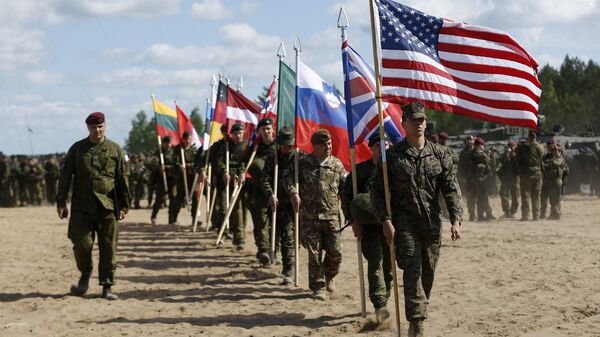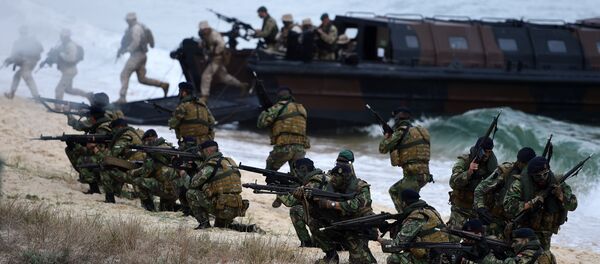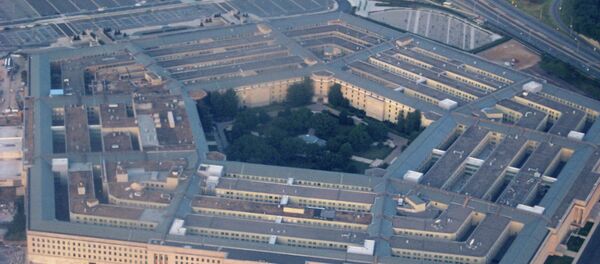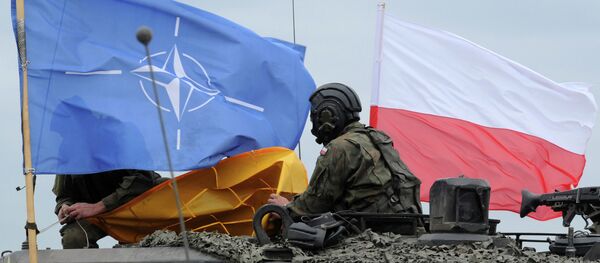The North Atlantic Treaty Organization (NATO), a military alliance aimed against the Soviet Union, was established on April 4, 1949; and only seven years after the formation of NATO the Warsaw Treaty Organization was established bringing together eight nations (versus 15 NATO member-states).
So, who was the real "aggressor"? What alliance was an offensive one?
"There has been much discussion recently of NATO in the mainstream and alternate media. Why was NATO founded in the first place and why did it expand so rapidly after the collapse and dismemberment of the USSR in 1991," Professor Michael Jabara Carley of the University of Montreal writes in his article for Strategic Culture Foundation.
In this light it was hardly surprising that even after Nazi Germany invaded the Soviet Union on June 22, 1941, London could not entirely shed its anti-Soviet enmity.
"The prime minister, Winston Churchill, worried about Red Army victories. This was a surprising position since until June 1944 the Red Army did most of the fighting against the Wehrmacht," the professor notes.
Furthermore, just a fortnight after VE-Day, the British Chiefs of Staff Joint Planning Committee presented the top secret Operation "Unthinkable" — "an outrageous, suicidal plan for a new Anglo-American war, backed by German troops in new uniforms, against the USSR."
The USSR lay in ruins: some 70,000 cities, towns and villages were devastated by the war, tens of thousands of factories, collective farms, schools, hospitals and other public buildings had to be reconstructed.
In contrast, the United States' economy caught a second wind after the WWII. The Soviet government hoped for help from its former wartime allies, but its expectations were not met.
"Stalin was aware of Anglo-American hostility, but tried nevertheless for a time to work with his putative 'allies' without however sacrificing what he saw as Soviet vital interests. 'I am not a propagandist', Stalin said to an American interlocutor, 'I am a man of business', " the academic continues.
Professor Carley calls attention to the fact that Soviet military policy was not provocative: after WWII the Red Army was demobilized to approximately 25 percent of its wartime strength.
However, under the rule of the 33rd President of the United States Harry S. Truman, Washington started to form an anti-Soviet European bloc. Eventually, in 1949, the US-dominated bloc was transformed into a powerful military alliance.
"Funded generously by the United States, the polarization of Europe continued into the 1950s, and West Germany became a NATO member in May 1955. This development provoked the formation of the Warsaw Pact, led by the USSR," the Canadian academic narrates.
Instead, NATO continued its "triumphant" eastward march at a steady pace: since 1991 the Alliance has absorbed former Warsaw Pact nations and former Soviet Baltic Republics.
Remarkably, it was US Secretary of State James Baker who promised then Soviet leader Mikhail Gorbachev that NATO would not expand 'one inch' toward the east, Professor Carley recalls, adding that the White House did not keep the promise.
"NATO expanded to construct a new anti-Russian 'cordon sanitaire', suggesting that the US 'Deep State' was not sure it had sufficiently weakened the much reduced Russian Federation. It was an insurance policy against any Russian resurgence, and an arm to be used against any state which failed to do US bidding," the academic underscores.
Interestingly enough, in order to encircle Russia and dismantle its Eastern European allies, Washington and NATO sided with neo-fascists in Croatia, Muslim fundamentalists in Bosnia and Kosovo and neo-Nazis in Ukraine. The NATO military aggression against Yugoslavia in 1999 demonstrated clearly that "any apostate of US domination" would be destroyed.
On December 2, 2015 NATO invited Montenegro to become the 29th member of the Alliance. The Alliance is still expanding, leaving no doubts in its offensive nature.




